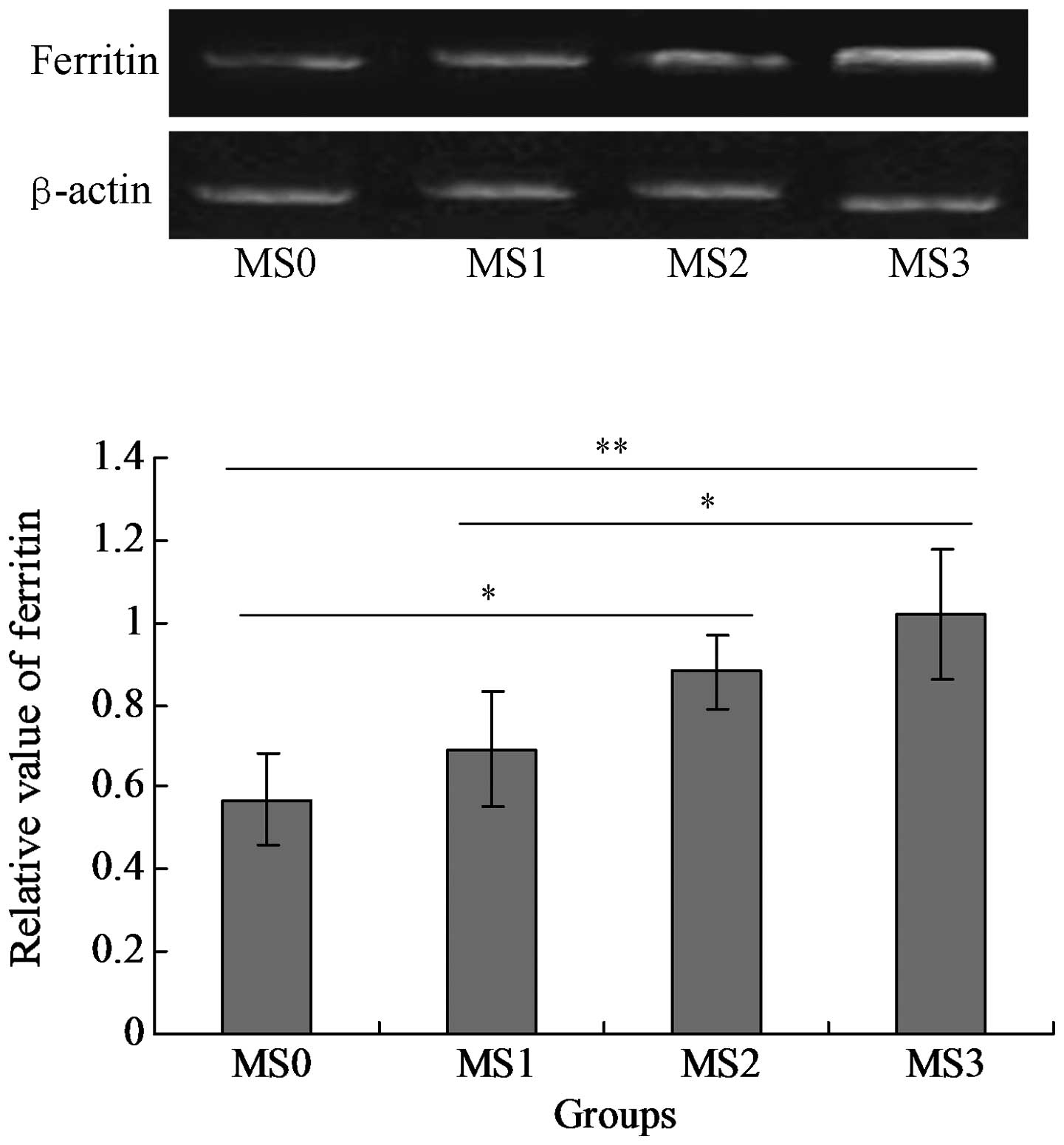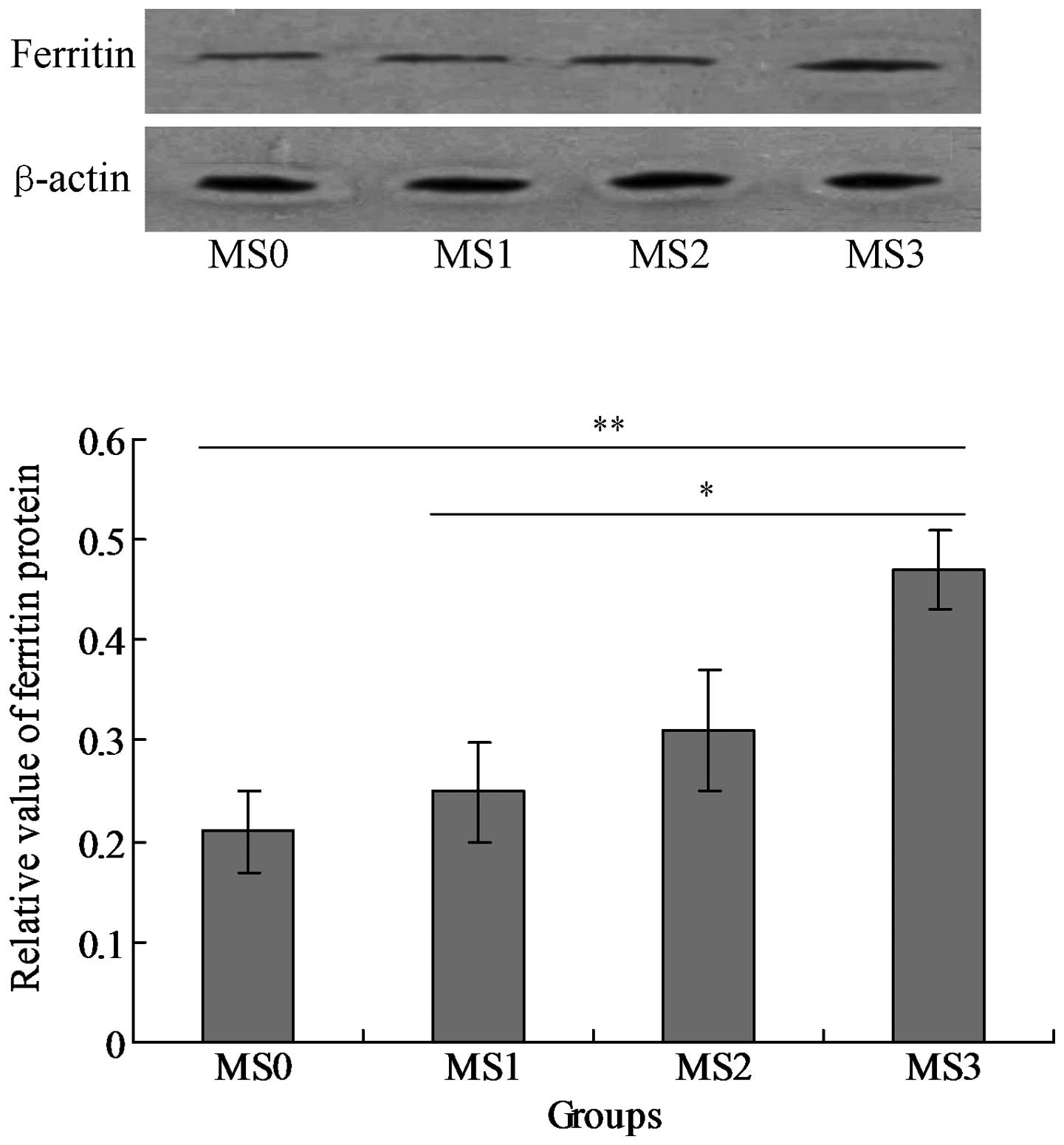|
1
|
Leiva E, Mujica V, Palomo I, Orrego R,
Guzmán L, Núñez S, Moore-Carrasco R, Icaza G and Díaz N:
High-sensitivity C-reactive protein and liver enzymes in
individuals with metabolic syndrome in Talca, Chile. Exp Ther Med.
1:175–179. 2010.PubMed/NCBI
|
|
2
|
Jennings JR, Heim AF, Kuan DC, Gianaros
PJ, Muldoon MF and Manuck SB: Use of total cerebral blood flow as
an imaging biomarker of known cardiovascular risks. Stroke.
44:2480–2485. 2013. View Article : Google Scholar : PubMed/NCBI
|
|
3
|
Ginsberg H: Statins in cardiometabolic
disease: what makes pitavastatin different? Cardiovasc Diabetol.
12(Suppl 1): S12013. View Article : Google Scholar : PubMed/NCBI
|
|
4
|
Haraguchi K, Uto H, Ohnou N, Tokunaga M,
Tokunaga M, Utsunomiya A, Hanada S and Tsubouchi H: Serum
prohepcidin levels are potential prognostic markers in patients
with multiple myeloma. Exp Ther Med. 4:581–588. 2012.PubMed/NCBI
|
|
5
|
Wilson JG, Lindquist JH, Grambow SC, Crook
ED and Maher JF: Potential role of increased iron stores in
diabetes. Am J Med Sci. 325:332–339. 2003. View Article : Google Scholar : PubMed/NCBI
|
|
6
|
Wolff SP: Diabetes mellitus and free
radicals. Free radicals, transition metals and oxidative stress in
the aetiology of diabetes mellitus and complications. Br Med Bull.
49:642–652. 1993.PubMed/NCBI
|
|
7
|
George DK, Goldwurm S, MacDonald GA,
Cowley LL, Walker NI, Ward PJ, Jazwinska EC and Powell LW:
Increased hepatic iron concentration in nonalcoholic
steatohepatitis is associated with increased fibrosis.
Gastroenterology. 114:311–318. 1998. View Article : Google Scholar : PubMed/NCBI
|
|
8
|
Williams MJ, Poulton R and Williams S:
Relationship of serum ferritin with cardiovascular risk factors and
inflammation in young men and women. Atherosclerosis. 165:179–184.
2002. View Article : Google Scholar : PubMed/NCBI
|
|
9
|
Piperno A, Trombini P, Gelosa M, Mauri V,
Pecci V, Vergani A, Salvioni A, Mariani R and Mancia G: Increased
serum ferritin is common in men with essential hypertension. J
Hypertens. 20:1513–1518. 2002. View Article : Google Scholar : PubMed/NCBI
|
|
10
|
Sharifi F, Nasab NM and Zadeh HJ: Elevated
serum ferritin concentrations in prediabetic subjects. Diab Vasc
Dis Res. 5:15–18. 2008. View Article : Google Scholar : PubMed/NCBI
|
|
11
|
Mainous AG, Weinberg ED, Diaz VA, Johnson
SP, Hulihan MM and Grant AM: Calcium channel blocker use and serum
ferritin in adults with hypertension. Biometals. 25:563–568. 2012.
View Article : Google Scholar : PubMed/NCBI
|
|
12
|
Deng X, Ma C-M and Liu B: The metabolism
of healthy crowd in syndrome study on the correlation between
diabetes and serum ferritin. Chin J Heal Manag. 6:271–272.
2012.
|
|
13
|
Bozzini C, Girelli D, Olivieri O,
Martinelli N, Bassi A, De Matteis G, Tenuti I, Lotto V, Friso S,
Pizzolo F and Corrocher R: Prevalance of body iron excess in the
metabolic syndrome. Diabetes Care. 28:2061–2063. 2005. View Article : Google Scholar : PubMed/NCBI
|
|
14
|
Fernández-Real JM1, Peñarroja G, Castro A,
García-Bragado F, Hernández-Aguado I and Ricart W: Blood letting in
high-ferritin type 2 diabetes: effects on insulin sensitivity and
beta-cell function. Diabetes. 51:1000–1004. 2002.PubMed/NCBI
|
|
15
|
Vari IS, Balkau B, Kettaneh A, Andre P,
Tichet J, Fumeron F, Caces E, Marre M and Grandchamp B: Ferritin
and transferrin are associated with metabolic syndrome
abnormalities and their change over time in a general population.
Diabetes Care. 30:1795–1801. 2007. View Article : Google Scholar : PubMed/NCBI
|
|
16
|
Wärnberg J and Marcos A: Low grade
inflammation and the metabolic syndrome in children and
adolescents. Curr Opin Lipidol. 19:11–15. 2008.PubMed/NCBI
|
|
17
|
Lu Y, Shen ZH and Li HW: Effect of
lifestyle intervention on metabolic syndrome artery in patients
with early lesion detection index. Chinese Journal of Health
Management. 6:45–49. 2012.(In Chinese).
|
|
18
|
El-Gebali HH, Tahir SA, Haider SS and
El-Fakhri MM: Lipid peroxidative damage in the erythrocytes and
elevation of serum LDL-cholesterol, apolipoprotein-B, ferritin and
uric with age and in coronary heart disease patients. Saudi Med J.
21:184–189. 2000.PubMed/NCBI
|
|
19
|
Zhang J, Liu ZJ and Sun LP: Obesity
children blood lipid, serum ferritin and fatty liver in simple.
Chinese Journal of Child Health Care. 14:231–232. 2006.(In
Chinese).
|
|
20
|
Piperno A, Trombini P, Gelosa M, Mauri V,
Pecci V, Vergani A, Salvioni A, Mariani R and Mancia G: Increased
serum ferritin is common in men with essential hypertension. J
Hypertens. 20:1513–1518. 2002. View Article : Google Scholar : PubMed/NCBI
|












